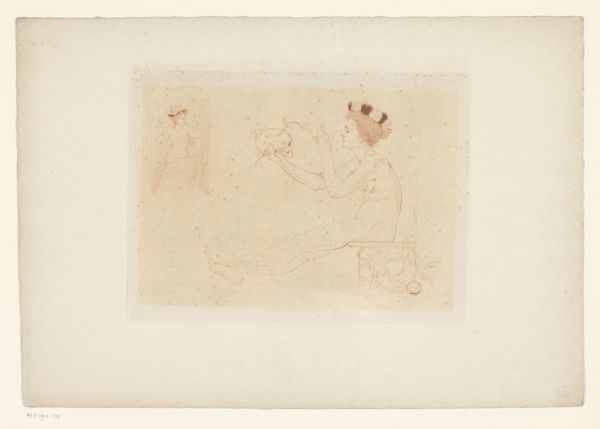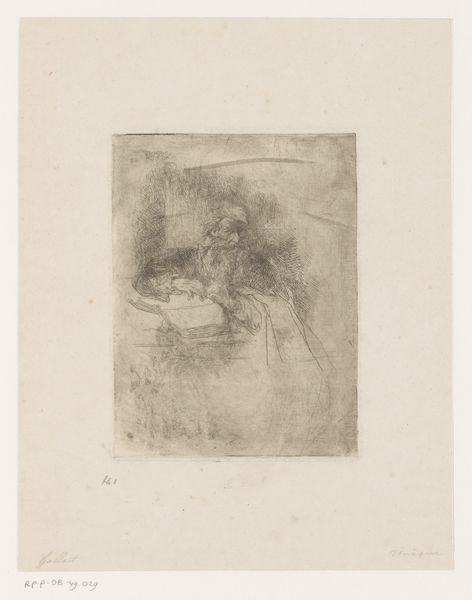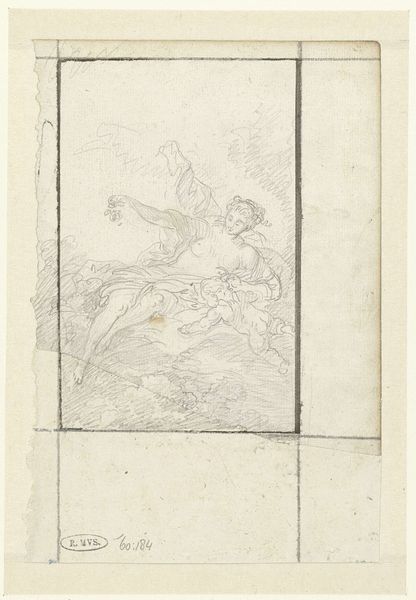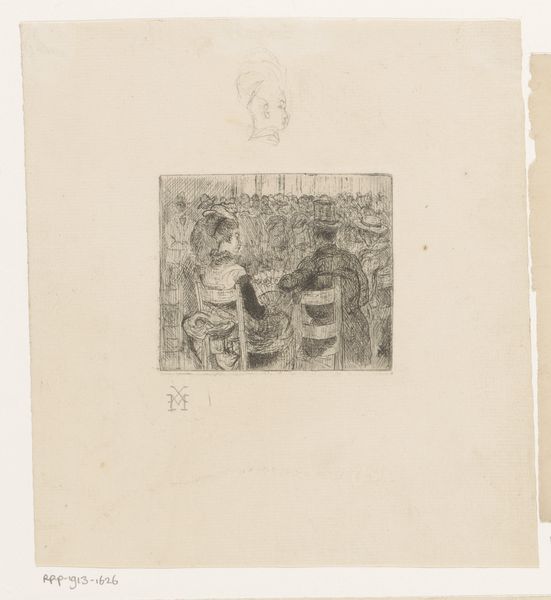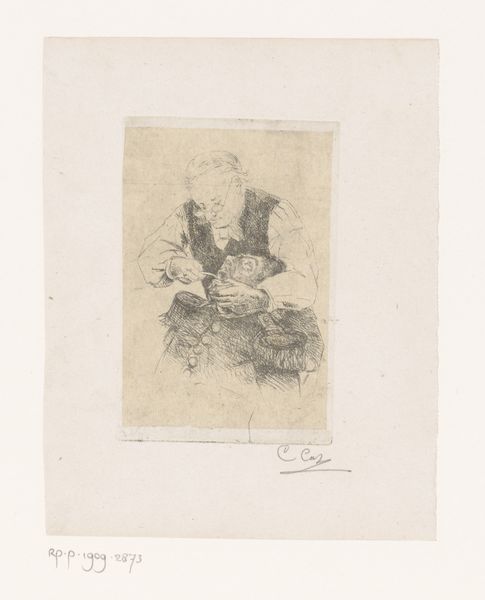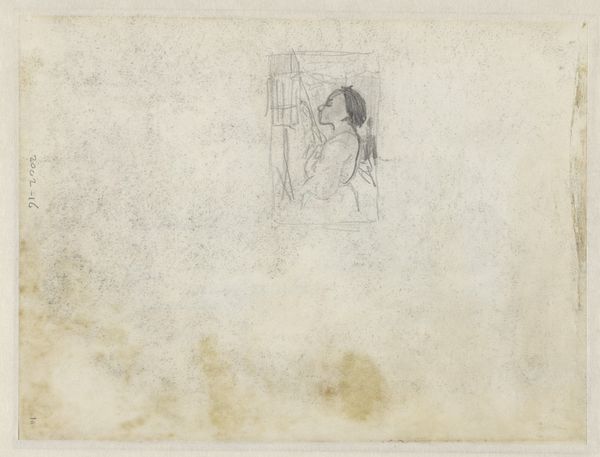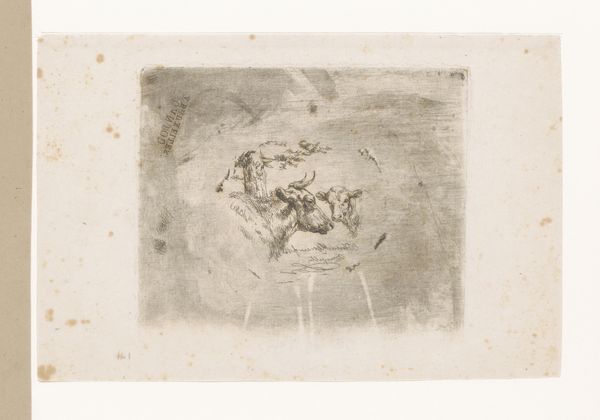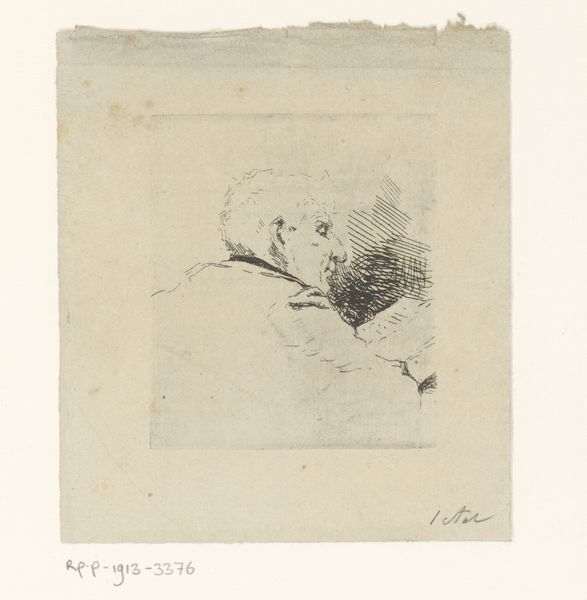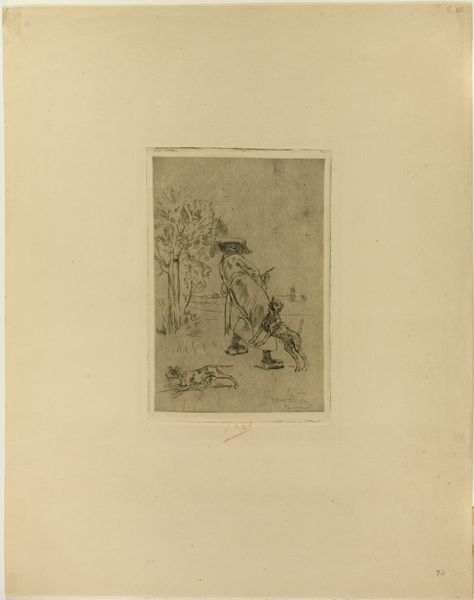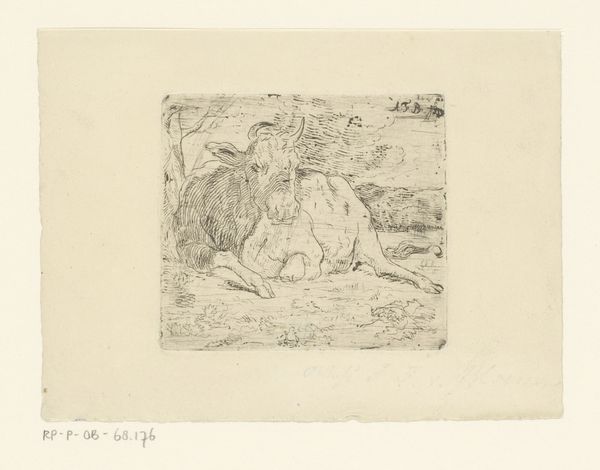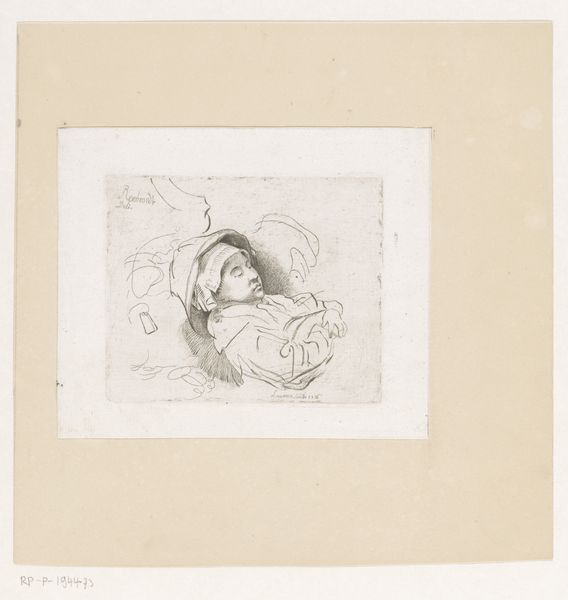
print, etching
# print
#
etching
#
etching
#
figuration
#
romanticism
#
history-painting
#
monochrome
Dimensions: height 88 mm, width 64 mm
Copyright: Rijks Museum: Open Domain
This print, made by Henri Leys in the 19th century, is made with etching, a printmaking technique that relies on acid to bite into a metal plate, usually copper or zinc. Leys would have covered a metal plate with a waxy, acid-resistant coating, then scratched an image into the coating with a pointed tool. When the plate is dipped in acid, the exposed lines are eaten away, creating grooves. The deeper the lines, the more ink they hold. So you can see the material qualities are quite literally made by acid. The plate is then inked, wiped clean, and pressed onto paper, transferring the image. Etching allowed for detailed, reproducible images, fitting into a wider economy of printmaking and illustration. Consider the labor involved: from the initial preparation of the plate to the final printing, each step requires skill. The image itself, of a monk praying, gains depth through the etched lines, reminding us that even spiritual subjects are mediated by material processes, blurring the line between craft and art.
Comments
No comments
Be the first to comment and join the conversation on the ultimate creative platform.

